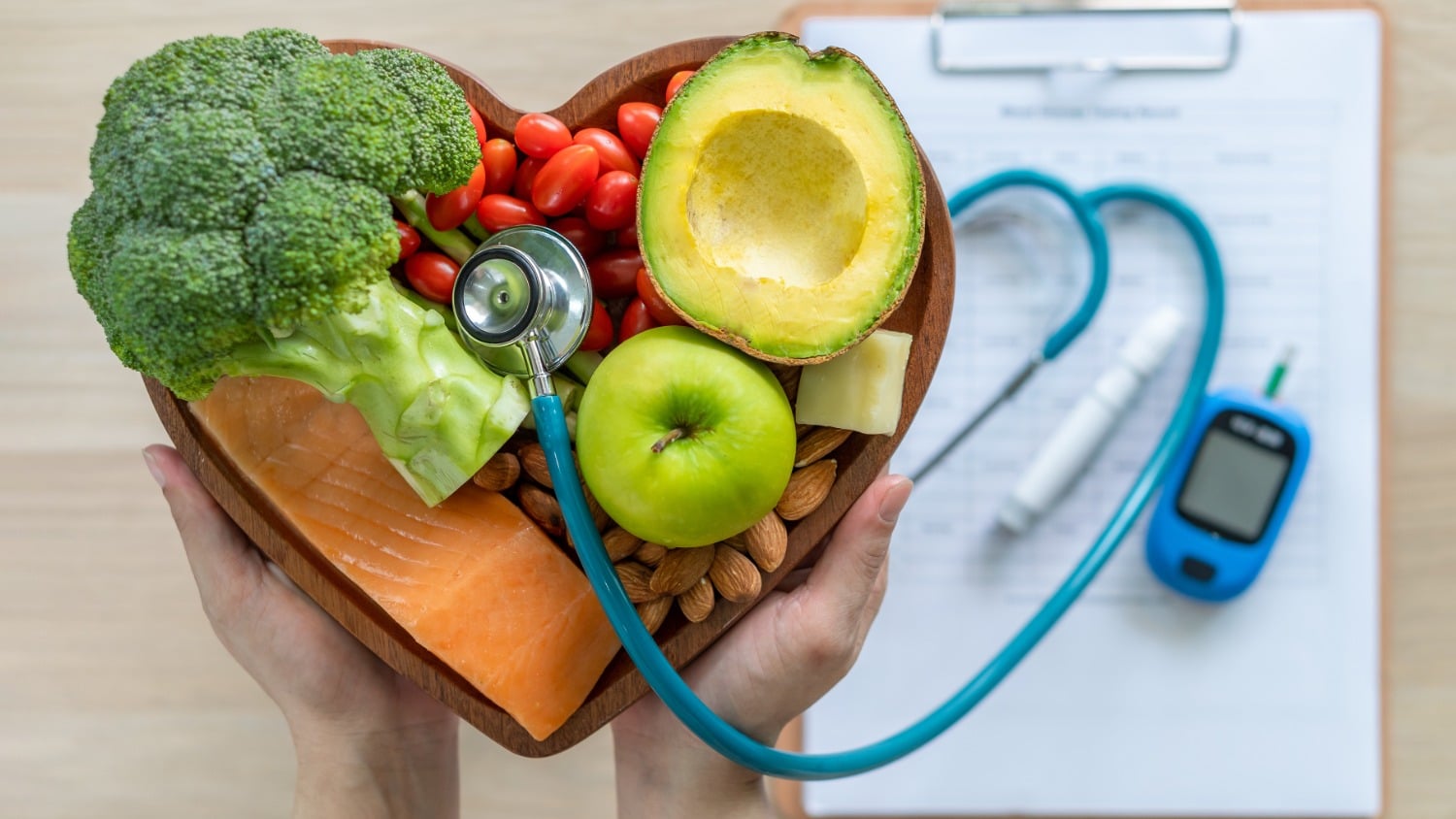
10 Foods that Keep Heart Disease from Worsening or May Prevent It All Together
Heart disease is actually any disease of the heart but what I will be addressing in this article is coronary artery disease – the most common heart disease. This causes narrowing of the arteries and may results in a heart attack. Heart disease is the leading cause of death in the United States.
Leading risk factors for coronary artery disease are family history, high blood pressure, high cholesterol, smoking, obesity and inactivity. Some of these risk factors are very much under your control. Try and control as many risk factors as possible.
Diet can greatly influence some of these risk factors. But, first and foremost, I want to stress that you need to take your medication as prescribed by your physician. Follow the medical advice and direction of your physician, keep your physician appointments, and do the necessary tests as instructed by your doctor.
Only after doing all of this should you consider fine tuning your heart health with the following foods that may be of benefit to you. Also, many people are on multiple medications such as warfarin that have restrictions. In addition, people may have coexisting disorders.
Restrictions due to the medications you take and diet instructions on your other disorders take precedence over the below suggested foods. Do not consume foods on the list that your physician has previously told you not to eat.
This being said, I would like to provide you with a list of 10 foods that help keep heart disease from worsening or may prevent it all together.
#1: Vegetables
Vegetables are low in calories and fat but are stock full of vitamins, minerals and fiber. The American Heart Association recommends at least eight servings of vegetables a day.
Leafy green vegetables in particular are most beneficial. Examples of leafy green vegetables are kale, collard greens, chard and spinach. Leafy green vegetables are high in nitrates that have been shown to improve the function of the cells lining the blood vessels.
Nitrates also decrease arterial stiffness and reduce blood pressure. Leafy green vegetables also contain Vitamin K which enhances proper blood clotting and protects your arteries.
Spinach is one of the best sources or magnesium, and magnesium is associated with a healthy heart rhythm. Swiss chard helps control blood sugar and reduces inflammation of the blood vessels.
Another great vegetable for your heart is asparagus. This vegetable has folate which prevents the amino acid homocysteine from accumulating in the body. High homocysteine levels have been associated with a high risk of coronary artery disease.
Some studies have shown regular broccoli consumption to lower cholesterol levels which prevents coronary artery disease.
#2: Whole Grains
Whole grains have many nutrients, and they are also high in fiber. Examples of whole grains are whole wheat, oats, barley, brown rice, quinoa, rye, and buckwheat. Read labels carefully when purchasing. Words like “multigrain” or “wheat flour” does not mean whole grain.
Oatmeal significantly reduces LDL and total cholesterol. Best benefits come from steel cut or slow cooked oats. The compound avenanthramide in oats may have protective anti-inflammatory effects on the heart.
Barley is one of the best sources of fiber when it comes to whole grain. Barley has flavonoids and other phytochemicals that have been shown to protect against heart disease.
#3: Beans
Beans are associated with reduced blood pressure and inflammation and lower triglyceride and LDL levels. They are filled with fiber, antioxidants, polyphenols and protein which are all beneficial for the heart.
Legumes are also very inexpensive. Beans are high in protein and contain no cholesterol. Therefore, they make a great meat substitute. Less meat consumption is good for your health and for the environment. Also, beans have starch that resist digestion and ferment by the good bacteria we have in our gut. So, beans are also good for our gastrointestinal health and help gut bacterial flora.
#4: Fish
Fish is a good substitute for high fat meats. The American Heart Association recommends a 3.5 ounce serving of fatty fish at least twice a week. Some fish are very high in omega-3-fatty acids which lower triglycerides and may lessen the risk of heart rhythm disorders and may also lower blood pressure. Cold water fish such as salmon, herring and mackerel have the highest omega-3-fatty acids content.
Sardines are also high in omega-3-fatty acids, and they have high levels of calcium. They are also usually low in mercury levels.
#5: Fruit
Fruits are a great source of minerals, vitamins and fiber. They are also low in calories. In addition, they contain substances that fight and prevent heart disease.
Oranges have fiber pectin which lowers cholesterol. They also have potassium that helps lower blood pressure. Oranges actually have more potassium that bananas.
Berries and cherries have anthocyanins which are antioxidants believed to protect blood vessels. Antioxidants neutralize free radicals that are known to cause oxidative inflammation and damage. These free radicals contribute significantly to heart disease.
Avocados have monosaturated fats which reduce cholesterol. The cardioprotective and lipid lowering effects of avocados have been shown in several studies. They are also a great source of blood pressure lowering potassium.
Tomatoes have lots of the antioxidant lycopene. Low levels of lycopene have been associated with an increased risk of stroke and heart attack. Lycopene helps lower cholesterol and blood pressure, and it helps with blood vessel wall health. Tomatoes also have lots of Vitamin C, choline, folate, potassium and fiber; all of which are good for the heart.
Grapes have also been found to improve blood flow, regulate blood pressure and protect your blood vessels.
Apples have procyanidins which have strong antioxidant activity and may lower LDL cholesterol. Red apples contain more procyanidins.
#6: Nuts
Nuts have healthy fats, and they are filled with fiber and protein. These also have lots of nutritious minerals and antioxidants. Walnuts, almonds, peanuts, pistachios, hazelnuts, and pecans are especially full of heart healthy nutrients. Of note, you should avoid nuts with added ingredients, such as sugary coatings or flavorings.
Walnuts have lots of omega-3-fatty acids, plant sterols, monosaturated fats, and fiber. They also have lots of copper, manganese and magnesium.
Almonds in particular may help increase your good cholesterol, HDL, and lower the bad cholesterol, LDL. HDL can reduce plaque buildup in your arteries, keeping them clear. Be aware though, while almonds are very high in nutrients, they are also very high in calories. So, take this into consideration if you are trying to lose weight.
#7: Olive Oil
Olive oil is a healthy fat made from smashed olives. It has lots of antioxidants. Replacing saturated fats like butter with olive oil can be particularly heart healthy. A higher intake of olive oil has been associated with a 48% lower risk of dying from heart disease.
#8: Tofu
Tofu is a great source of vegetarian soy protein. It also contains polyunsaturated fats, fiber and minerals that are good for your heart. Tofu takes on the taste of spices or sauces you put it in.
#9: Seeds
Flaxseed, hemp seeds, sunflower seeds and chia seeds have heart-healthy nutrients such as omega-3-fatty acids and fiber.
Hemp seeds are full of arginine, an amino acid that reduces some inflammatory markers.
Flaxseed may lower cholesterol and blood pressure. In addition to lowering risk for cardiovascular disease, flaxseed has been shown to lower risk of cancer and help with diabetes and gastrointestinal health.
#10: Garlic
Garlic has allicin which has been associated with a lot of health benefits. Garlic reduces cholesterol, decreases blood pressure and it inhibits platelet buildup, which reduces the risk of blood clots and stroke.
In Conclusion
To best manage or prevent heart disease, make sure you are under the care of a physician, take your prescribed medication, do the lab and other tests that are ordered, and follow a heart smart diet as instructed by your physician and/or dietician.
Once you are doing all of this, consider the value of the above-mentioned foods in helping manage or prevent coronary artery disease. See how supposedly small changes in diet can alter health.
Let’s Have a Conversation:
Do you have coronary artery disease? Do you regularly incorporate these foods into your diet? Have you noticed a difference in your lab results and energy levels when you eat these foods? Share your thoughts.







Unfortunately, fish is often polluted nowadays. The FDA has a list of mercury content that you should always check. Unless one can access a time machine and teleport back to the days before the Industrial Revolution, fish will remain the leading source of many toxic pollutants.
From Dr Michael Greger:
The number-one food source of arsenic was poultry among preschoolers and, for their parents, tuna. The top source for lead? Dairy. For mercury? Seafood. Eating just a single serving of fish each week during pregnancy, for example, can lead to more mercury in their infant’s body than injecting them directly with about a dozen mercury-containing vaccines.
Where in the food supply are these pollutants found? Today, most DDT comes from meat, particularly fish. The oceans seem to have become, essentially, humanity’s sewer: Everything eventually flows into the sea. The same is true when it comes to dietary exposure to PCBs—another set of banned chemicals. A study of more than 12,000 food and feed samples across 18 countries found that the highest PCB contamination was found in fish and fish oil, followed by eggs, dairy, and then other meats. The lowest contamination was found at the bottom of the food chain, in plants.
I am a professional private chef specializing in keeping people healthy through nutrient dense food/cooking and I believe in this list unconditionally
Fruit is a good source of fibre, (I’m in Australia) & vitamins, etc, but it is also full of sugar! Fructose. So maybe just have one serve per day.
Great article, but it’s the same broken record that we constantly hear. Perhaps, to that list, should be added a personal grocery shopper and chef who will buy all those items, keep track of them, chop and mix and combine and cook them for you. And clean up.
Love it!!!